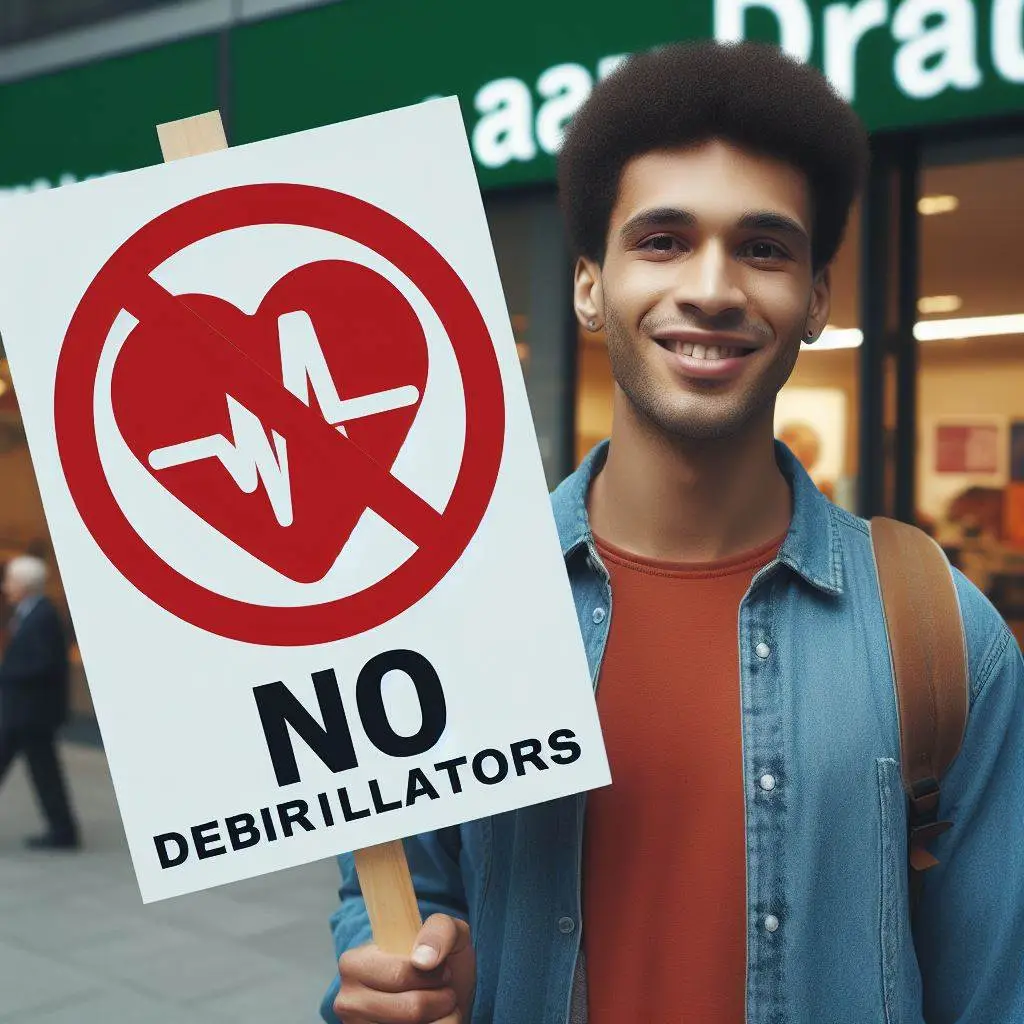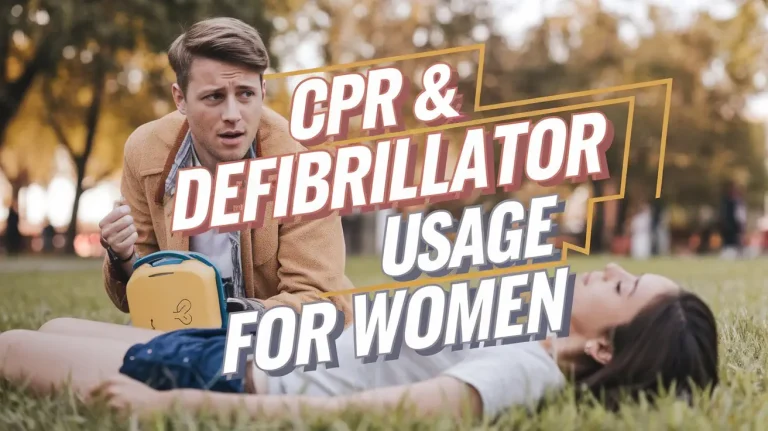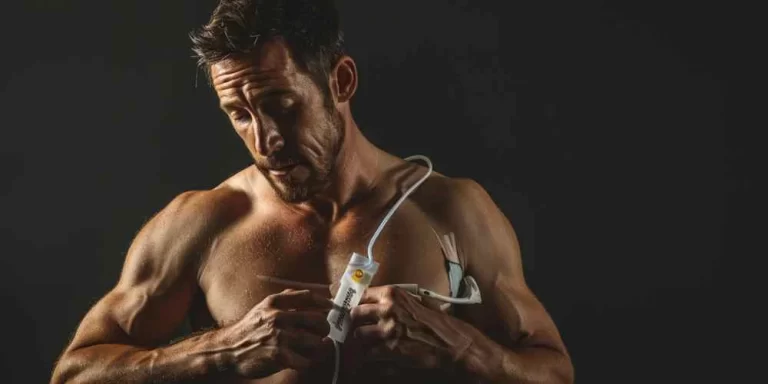When not to use a defibrillator:

Hey there, defibrillator enthusiasts! We all know that defibrillators are amazing, life-saving devices.
But just like with any tool, there are times when you shouldn’t use them. Let’s dive into some situations where you might want to hold off on the shocking and avoid some potentially “shocking” situations!
Don’t Shock the Conscious
Picture this: you’re out and about, and you see someone who looks a bit under the weather. Your first instinct might be to whip out your trusty defibrillator and start shocking away. But hold up! If the person is actually conscious, using a defibrillator on them is a big no-no.
It be a waste of perfectly good defibrillator pads and battery life, why burn your money. Plus, defibrillators are smart cookies – they have sensors that can tell when a shock is actually needed. So, if you use it on a conscious person, you’re basically just throwing away those valuable resources.
Recap: Can you use a defibrillator on a conscious person?
Nope! Using a defibrillator on a conscious person is a waste of pads and battery life. Defibrillators have sensors that only deliver a shock when it’s truly needed, so save those resources for a real emergency.
Breathing? No Shocking!
Okay, let’s say you come across someone who is unconscious. Before you reach for the defibrillator, take a moment to check if they’re breathing normally. You do this through the look listen and feel test. By placing your hand on their chest you’ll see your hand rise and fall if they are breathing. If your head is near there’s you might feel breath on your cheek and hear breathing noises. If they’re taking regular breaths, hold off on the shock therapy.
Just like with a conscious person, using a defibrillator on someone who is breathing normally would be a waste of those precious pads and battery life. The defibrillator’s sensors are designed to detect when a shock is necessary, so trust in their judgment and save the shocking for when it’s truly needed.
Recap: Should you use a defibrillator on an unconscious person who is breathing normally?
No way! If the person is breathing normally, defibrillation isn’t necessary. It would just waste the pads and battery
Water and Electricity: A Shocking Combo

We all know that water and electricity don’t mix. So, if you see someone in need of defibrillation but they’re in contact with water, take a step back. Using a defibrillator on someone who is in water can be dangerous – not just for them, but for you too!
If you try to shock someone in water, you could end up zapping yourself in the process. Talk about a shocking situation! If you do need to use a defibrillator on someone near water, first make sure they aren’t in any large puddles, remove the wet clothing and dry of pooling water off their chest with a towlette. Ensure that you’re not touching them when delivering the shock.
Recap: Can you use a defibrillator on someone in contact with water?
No, Water and electricity are a dangerous combination. Using a defibrillator on someone in water could lead to you getting zapped too. If you can try to find a dry area and dry their chest before delivering a shock.
Don’t Be a Shocking Bystander
When someone is in need of defibrillation, it’s natural to want to jump in and help. But remember, if you’re touching the person when the shock is delivered, you could be in for a shocking surprise yourself!
Make sure to stand clear of the person and avoid any contact with them or the defibrillator when the shock is being administered. Let the defibrillator do its job without any extra “help” from you.
Flammable Environments: A Shocking Risk

Defibrillators are incredible tools, but In certain environments, using a defibrillator can actually be risky. If you’re in an area with flammable gases or materials, think twice before reaching for the defibrillator.
The spark from the defibrillator could potentially ignite those flammable substances, leading to a dangerous situation. In these cases, it’s best to defer to the advice of trained medical professionals or emergency services personnel who can assess the safety of the environment before using a defibrillator.
These could include paint booths, chemical storage areas, petrol refineries or any area where you have to be careful about sparks.
Can you use a defibrillator in a flammable environment?
It’s risky business! The spark from a defibrillator could ignite flammable gases or materials. In these situations, it’s best to follow the guidance of trained medical professionals who can determine if it’s safe to use a defibrillator.
Trust the Experts
At the end of the day, while defibrillators are designed to be user-friendly, there’s no substitute for the knowledge and experience of medical professionals. If you’re ever unsure about whether or not to use a defibrillator, don’t be afraid to defer to their expertise.
Trained medical staff and emergency services personnel have the skills and judgment to assess the situation and determine the best course of action. So, if they advise against using a defibrillator in a particular scenario, trust their guidance.
The Bottom Line
Defibrillators are incredible, life-saving devices. By knowing when not to use a defibrillator, you can avoid wasting resources, prevent potential hazards, and ensure that you’re providing the best possible care in an emergency situation.
Remember, don’t shock the conscious, the breathing, or the wet. Stand clear of the person when delivering a shock, and be cautious in flammable environments. And if you’re ever unsure, trust the experts!
With these guidelines in mind, you’ll be prepared to handle any “shocking” situation that comes your way! If you’d like to read more about how defibrillators work, read our article.






